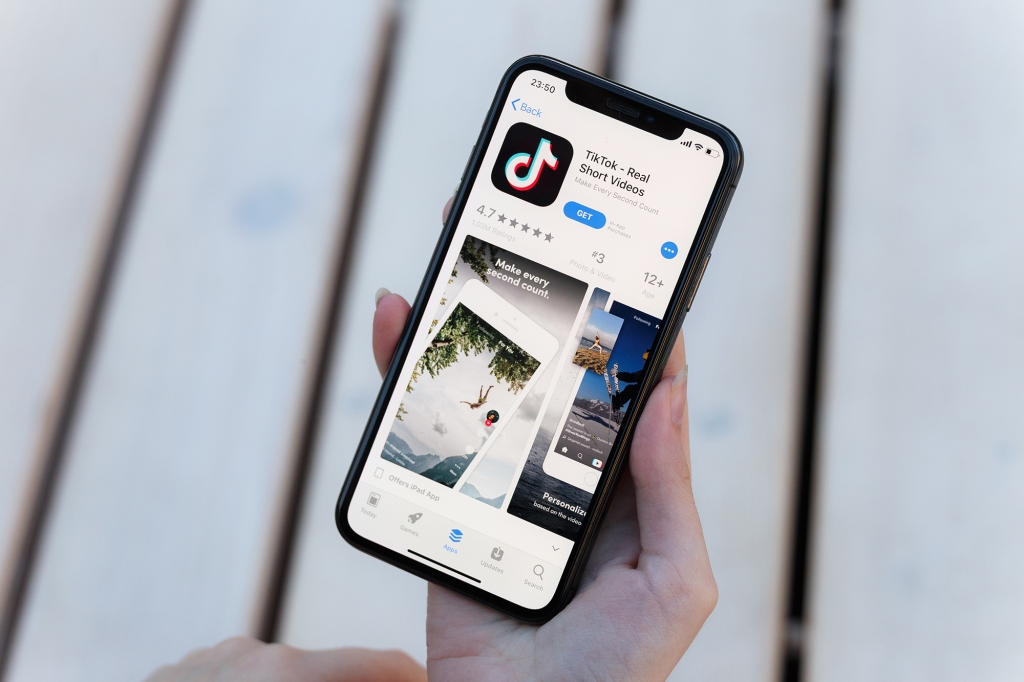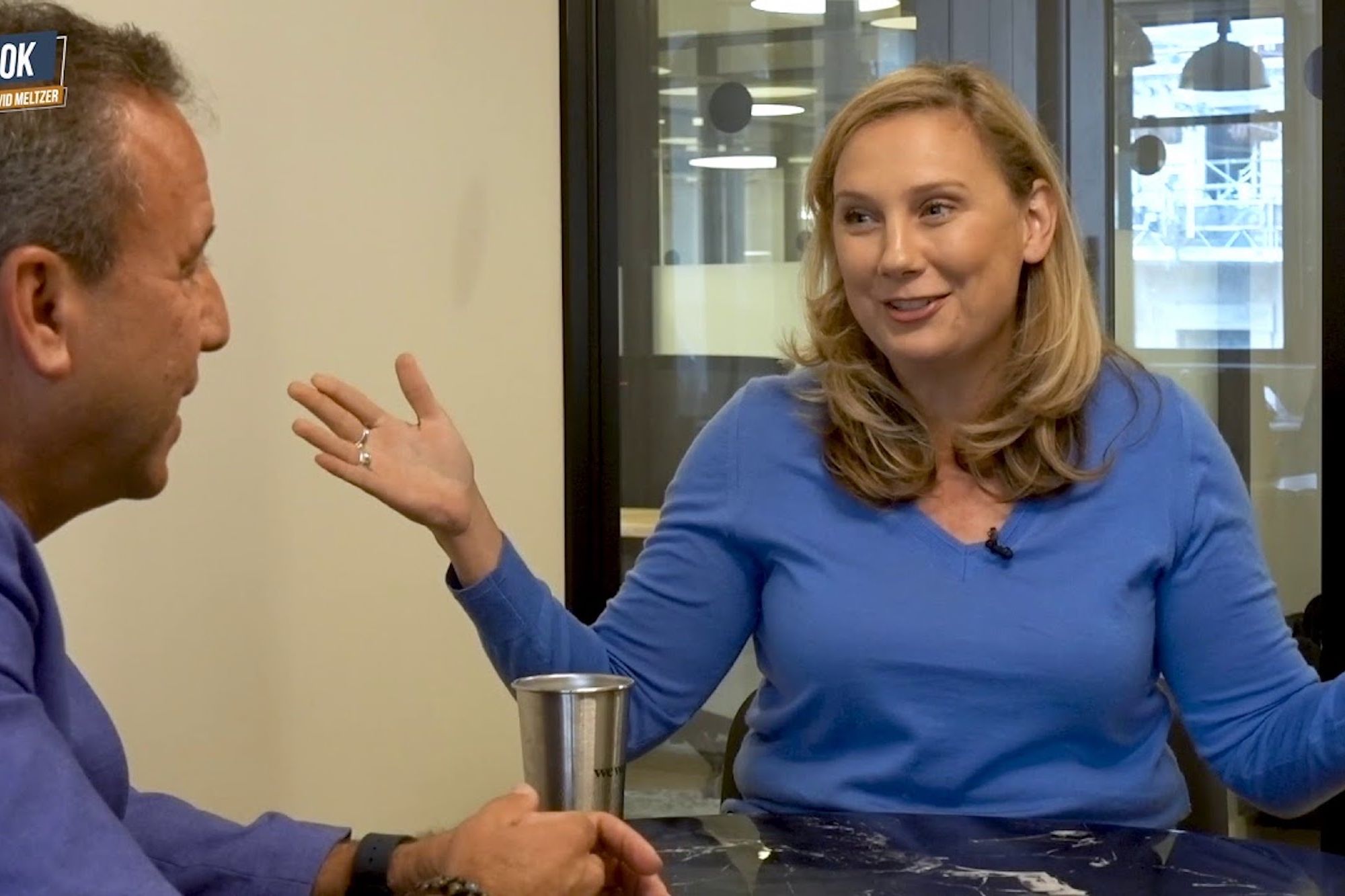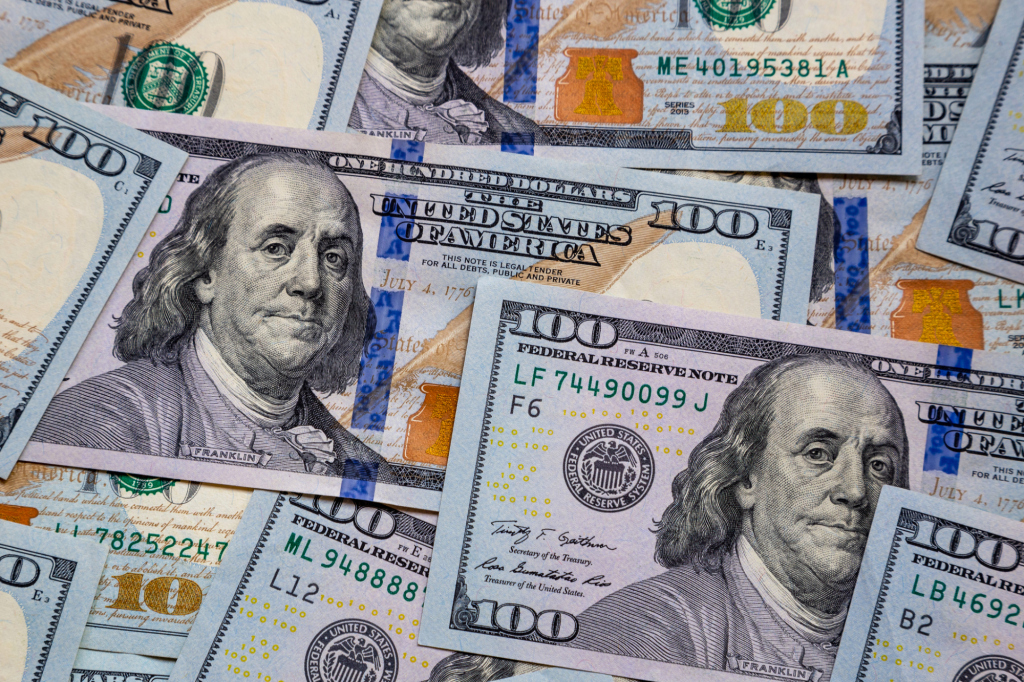If all politics is theater, Rep. Tim Ryan is one of its subtler actors. A moderate Democrat from Ohio’s 13th Congressional District who has represented the state for nearly two decades, his speeches and debate performances are often described as coming out of central casting. His style choices are D.C. standard. He’s not usually the subject of late-night skits or memes.
That’s not to say he isn’t trying. Back in the spring of 2020, as COVID-19 was overtaking the country and a divided Congress was duking it out over a sweeping stimulus bill, Ryan, 48, was so frustrated at the stalled legislation that he decided to channel his emotion into a TikTok video.
The 15-second clip features Ryan lounging around his office in a white button-down and dress pants, his tie slightly loose, as he mimes a clean version of “Bored in the House,” by Curtis Roach. It’s a rap song that resonated with cooped-up Americans early on in the pandemic, featuring a refrain (“I’m bored in the house, and I’m in the house bored”) that appears in millions of videos across TikTok. Most of them depict people losing their minds in lockdown. Ryan’s interpretation was a little more literal: Bored … in the House … get it?
Ryan is not a politician one readily associates with the Zoomers of TikTok. His talking points tend to revolve around issues like reviving American manufacturing rather than, say, defunding the police. But the chino-clad congressman wasn’t naive to the nontraditional places from which political influence might flow. Years ago he was all in on meditation. Why not try the social platform of the moment?
His teenage daughter, Bella, got him up to speed and taught him some dances that had gone viral on the app. “I just thought it was hysterical, and that it was something really cool that her and I could do together,” Ryan said in a phone interview.
Soon enough, he was posting on his own account, sharing video montages of his floor speeches and his views on infrastructure legislation, backed by Taylor Swift’s “All Too Well.” (As any TikTok newbie quickly learns, popular songs help videos get discovered.)
“I started to see it as an opportunity to really speak to an audience that wasn’t watching political talk shows or watching the news,” Ryan said. This year, he’s running for Ohio’s open Senate seat; he thinks TikTok could be a crucial part of the race.
But as primaries begin for the midterm elections, the real question is: What do voters think?
Privacy, protest and punditry
Social media has played a role in political campaigning since at least 2007, when Barack Obama, then an Illinois senator, registered his first official Twitter handle. Since then, enormous numbers of political bids have harnessed the power of social platforms, through dramatic announcement videos on YouTube, Twitter debates, Reddit AMAs, fireside chats on Instagram Live and more. TikTok, with its young-skewing active global user base of 1 billion, would seem a natural next frontier.
So far, though, compared with other platforms, it has been embraced by relatively few politicians. Their videos run the gamut of cringey — say, normie dads bopping along to viral audio clips — to genuinely connecting with people.
“TikTok is still in the novelty phase in terms of social media networks for political candidates,” said Eric Wilson, a Republican political technologist.
Republicans in particular have expressed concerns about the app’s parent company, ByteDance, whose headquarters are in China. In the final year of his presidency, Donald Trump signed an executive order to ban the app in the United States, citing concerns that user data could be retrieved by the Chinese government. (President Joe Biden revoked the order last summer.)
After a brief stint on the app, Sen. Marco Rubio, R-Fla., deleted his account. He has since called on Biden to block the platform entirely. In an email statement, Rubio, 50, wrote that TikTok “poses a serious threat to U.S. national security and Americans’ — especially children’s — personal privacy.”
That point has been disputed by national security experts, who think the app would be a relatively inefficient way for Chinese agencies to obtain U.S. intelligence.
“They have better ways of getting it,” said Adam Segal, director of the Digital and Cyberspace Policy program at the Council on Foreign Relations, among them “phishing emails, directed targeted attacks on the staff or the politicians themselves or buying data on the open market.”
Regardless, TikTok seems to have empowered a new generation to become more engaged with global issues, try on ideological identities and participate in the political process — even those not old enough to vote.
There have been rare but notable examples of TikTok inspiring political action. In 2020, young users encouraged people to register for a Tulsa, Oklahoma, rally in support of Trump as a prank to limit turnout. Before the rally, Brad Parscale, Trump’s 2020 campaign manager, tweeted that there had been more than 1 million ticket requests, but only 6,200 tickets were scanned at the arena.
Such activity is not limited to young liberals on the platform. Ioana Literat, an associate professor of communication at Teachers College, Columbia University, pointed to the political “hype houses” that became popular on TikTok during the 2020 election. The owners of those accounts have livestreamed debates, debunked misinformation spreading on the app and discussed policy issues.
“Young political pundits on both sides of the ideological divide have been very successful in using TikTok to reach their respective audiences,” Literat said.
You’ve got my vote, bestie
Many of the politicians active on TikTok are Democrats or left-leaning independents, including Sen. Jon Ossoff of Georgia, Sen. Bernie Sanders of Vermont, Sen. Ed Markey of Massachusetts, Rep. Ilhan Omar of Minnesota and the mayors of two of America’s largest cities, Lori Lightfoot of Chicago and Eric Adams of New York City (who announced recently he had joined with a video that featured his morning smoothie regimen).
This could be because the platform has a large proportion of young users, according to internal company data and documents reviewed by The New York Times in 2020, and young people tend to lean liberal. (TikTok would not share current demographic data with the Times.)
“If you are a Democrat running for office, you’re trying to get young voters to go out and support you,” said Wilson, the Republican strategist. “That calculation is different for Republicans, where you’re trying to mobilize a different type of voter” — someone who is likely older and spends time on other platforms.
For his part, Markey has cultivated a following on TikTok with videos that are a mix of silly (such as boiling pasta for “Rigatoni Day”), serious (reintroducing the Green New Deal with Reps. Alexandria Ocasio-Cortez and Cori Bush) and seriously stylish (stepping out in a bomber jacket and Nike high-tops). The comments are filled with fans calling him “bestie” (“go bestie!!”, “i love you bestie,” “YES BESTIE!!!!”).
The feeling is mutual. “When I post on TikTok, it’s because I’m having fun online and talking with my friends about the things we all care about,” Markey, 75, wrote in an email. “I listen and learn from young people on TikTok. They are leading, they know what’s going on and they know where we are headed, especially online. I’m with them.”
Dafne Valenciano, 19, a college student from California, said that she’s a fan of Ossoff’s TikTok account. During his campaign season, “he had very funny content and urged young voters to go to the ballots,” Valenciano said. “Politicians accessing this social media makes it easier for my generation to see their media rather than through news or articles.”
Several of the videos posted by Ossoff, 35, who has moppy brown hair and boyish good looks, have been interpreted by his fans as thirst traps. “YAS DADDY JON,” one user commented on a video of him solemnly discussing climate change. Another wrote, on a post celebrating his first 100 days in office, that Ossoff was “hot and he knows it,” calling him a “confident king.” The senator has more than 500,000 followers on TikTok. Some politicians end up on the platform unwittingly. Take, for instance, the viral audio of Kamala Harris declaring, “We did it, Joe” after winning the 2020 election. Though the vice president doesn’t have an account herself, her sound bite has millions of plays.
Catering to such viral impulses may seem gimmicky, but it’s a necessary part of any candidate’s TikTok strategy. Political advertising is prohibited on the platform, so politicians can’t promote much of their content to target specific users. And the app pushes videos from all over the world into users’ feeds, making it hard for candidates to reach the ones who might actually vote for them.
Daniel Dong, 20, a college student from New Hampshire, said that he often sees posts from politicians in other states in his TikTok feed, but “those races don’t matter to me because I’m never going to be able to vote for a random person from another state.”
The art of the viral video
Christina Haswood, a Democratic member of the Kansas House of Representatives, started her TikTok account in the summer of 2020, when she was running for her seat.
“I went to my campaign manager and was like, ‘Wouldn’t it be funny if I made a campaign TikTok?’” Haswood, 27, said.
She won the race, making her one of a handful of Native Americans in the state Legislature. “A lot of folks don’t see an Indigenous politician, a young politician of color. You don’t see that every day across the state, let alone across the country,” Haswood said. “I want to encourage young people to run for office.”
At first, Haswood created TikToks that were purely informational — videos of her talking directly to the camera, which weren’t getting much traction. When one of the candidates running against her in the primary also started a TikTok, she felt she needed to amp things up.
Conner Thrash, at the time a high school student and now a college student at the University of Kansas, started to notice Haswood’s videos. “I really loved what she stood for,” Thrash, 19, said. “I realized that I had the ability to bridge the gap between a politician trying to expand their outreach and people like my young, teenage self.”
So he reached out to Haswood, and the two started making content together and perfecting the art of the viral TikTok. A video should strike a careful balance of entertaining but not embarrassing; low-fi without seeming careless; and trendy but innovative, bringing something new to the never-ending scroll.
One of their most-watched videos lays out key points of Haswood’s platform, including the protection of reproductive rights and legalizing recreational marijuana. The video is set to a viral remix of Taylor Swift’s “Love Story.”
TikTok may have helped Haswood win her race, but few candidates have had her success. Several politicians with large TikTok followings, including Matt Little (a former liberal member of the Minnesota Senate) and Joshua Collins (a socialist who ran for U.S. representative for Washington state), lost pretty badly, Literat said, “so technically they did not succeed from a political perspective.”
The behavior of young voters, in particular, can be hard to predict. In the 2020 presidential election, about half of Americans between ages 18 and 29 voted, according to the Center for Information & Research on Civic Learning and Engagement at Tufts University — a record turnout for an age group not known for showing up to the polls.
Still, “young people help drive the culture,” said Jennifer Stromer-Galley, the author of “Presidential Campaigning in the Internet Age” and a professor of information studies at Syracuse University.
“Even though they may or may not ever vote for Jon Ossoff, being on TikTok does help shape Ossoff’s image,” she added. “More people are going to know Ossoff’s name today because of his TikTok stunt than they did before.”
This article originally appeared in The New York Times.










